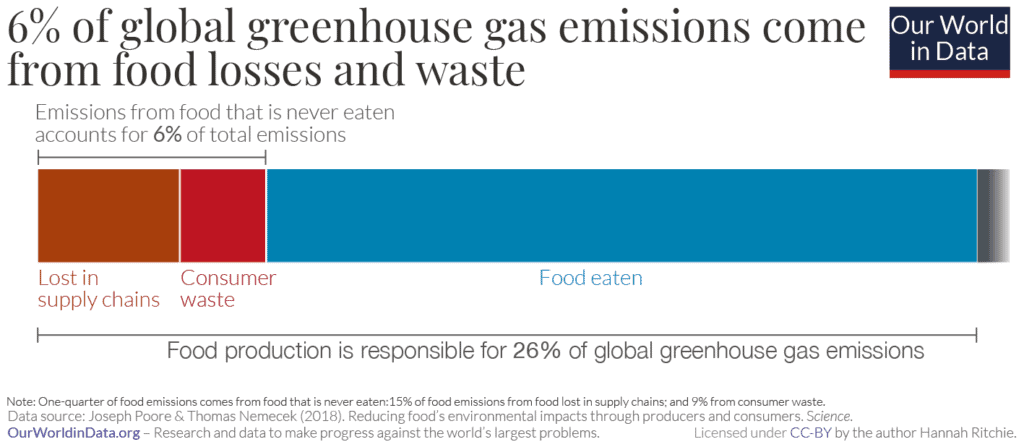The common perception is that restaurants, supermarkets, and consumers are the main culprits when it comes to food waste. That makes sense at first glance — after all, we all see these parties wasting a lot of food. But as is often the case, what we don’t see is even more important.
According to a new report, 1.2 billion tons of food are lost on farms alone — that’s where we need to start tackling food waste.

Ten million blue whales of food waste
Around one-quarter of the calories the world produces is thrown away — either spoiled or spilled in supply chains, or wasted by retailers, restaurants, and consumers. According to a new report conducted by WWF and UK food retailer Tesco, the Driven to Waste report shows that farm-level waste is responsible for over half of global food waste –1.2 billion tons, or the equivalent of ten million blue whales worth of food being thrown away before ever reaching a store or anyone’s house. For comparison, households and the retail sector together contribute to the significant, but lesser sum of 0.931 billion tons.
“Food loss” or “food waste”, as a general term, is often considered to be caused by negligence — who hasn’t thrown away a browned banana or something we just forgot about in our fridge? But food waste can actually be attributed to a variety of factors: pests, weather, disease, poor infrastructure, imperfect supply chains, lack of workforce, market conditions, and other business imperfections. Simply put, food waste happens on all levels of food production and distribution, but we usually just consider the last parts of the cycle. In practice, a lot of human decisions affect food waste. It could be that farmers have not been able to sell their produce, so they just don’t pick it. Or it could be because of the border and shipping conditions, as we’ve recently seen in post-Brexit Britain.
In fact, the report highlights another broken myth around food waste. A common belief seems to be that food loss on farms is an issue affecting less affluent regions of the globe, with lower levels of industrialization. But the report highlights that despite having on-farm mechanization and just over a third of the world’s population, countries from Europe, North America, and industrialized Asia contribute 58% of global harvest waste.
The problem runs deeper than just the food itself. Food produces a big chunk of our total greenhouse gas emissions, and food emissions account for a considerable part of that. While previous studies (mentioned below) found that 6-8% of all our global emissions come from food waste, the new report claims that the figure is closer to 10%. For comparison, all the transportation in the world (cars, planes, etc) account for 14%.

The report also offers some potential solutions to reducing this problem:
- Governments must place food loss and waste, particularly on farms, higher on policy agendas, and introduce binding food waste reduction targets
- Markets and supply chains need to help build fairer structures for farmers to prevent floods and gluts, or too much focus on producing certain foods
- Multilateral institutions and NGOs need to increase funding, ambition and capacity, so they match the scale of the problem
Of course, each and every one of us can also play a role, by being more careful with what we buy (and only buy what we know we will consume), and also by supporting businesses that prioritize sustainability.
“NGOs and multilateral organisations, market and supply chain actors, governments and citizens can all play a role in tackling the direct drivers of food waste on farms,” concludes Pete Pearson, Global Food Loss and Waste Initiative Lead at WWF.






